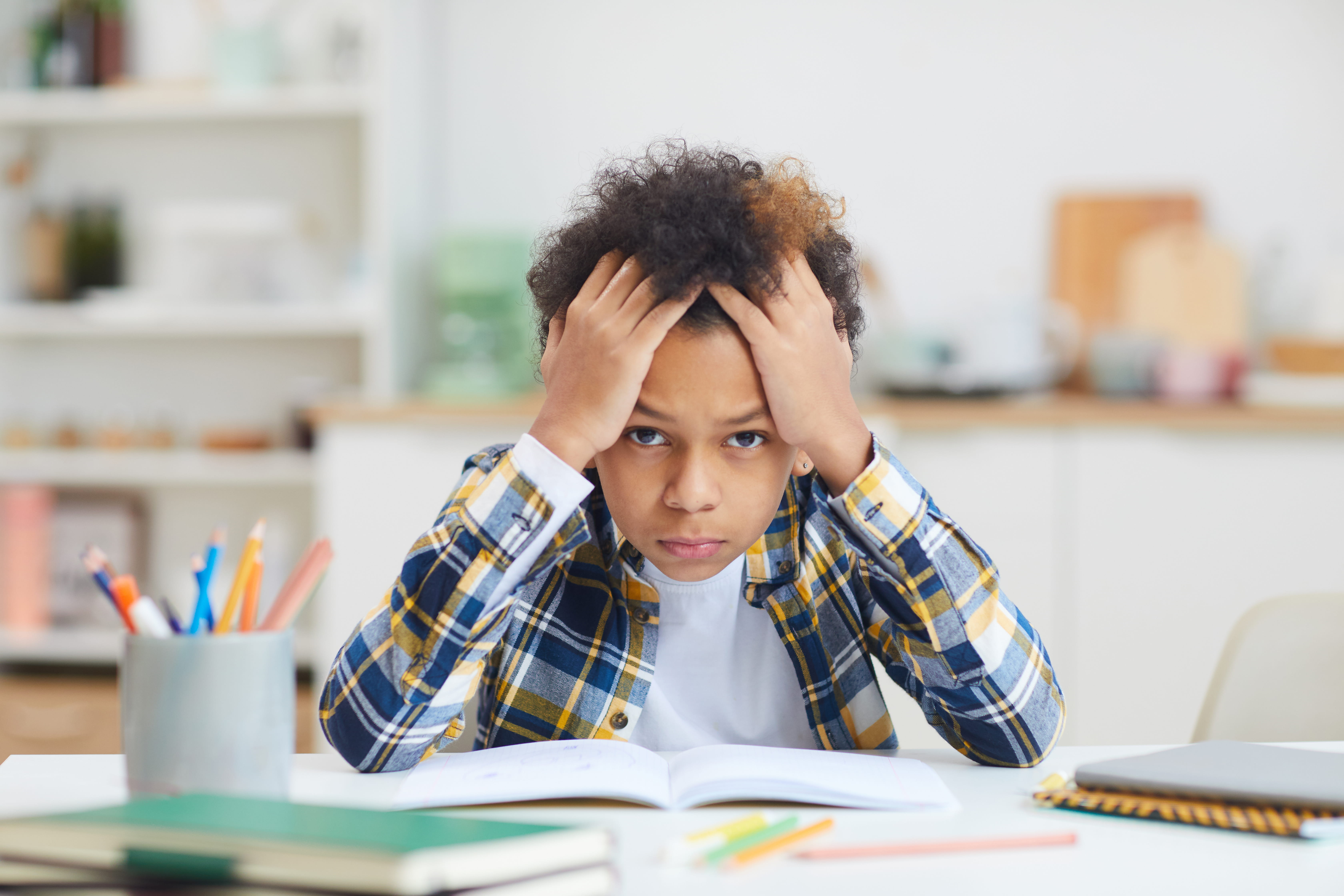Schools and districts are increasingly adopting the tenets of social-emotional learning (SEL) to help students thrive by becoming more adaptable to challenges and change. In this eight-part series, we examine how SEL can be incorporated in the classroom and how EdTech can help.
First, we take a holistic look at SEL. Then we dive into five SEL competencies: self-efficacy and self-awareness; social-emotional awareness; identity and emotional awareness; social awareness and collaboration; and critical thinking. We finish by exploring the importance of student mental health in this piece and how to create a culturally responsive classroom.
As teachers and students alike headed back to in-person learning, educators observed fundamental changes in student mental health. A review of multiple studies published in JAMA Pediatrics found that as many as 60% of children and adolescents reported high levels of mental health “distress,” most noticeably symptoms of anxiety and depression. Now, teachers are tasked with holistically supporting students’ mental wellbeing, closing learning gaps that emerged during the pandemic as well as maintaining their own mental health.
Merely adding more counseling services is not enough to stem the tide, as noted by Howard Adelman, co-director of the Center for Mental Health in Schools at the University of California, Los Angeles, in an EducationWeek story. “Without transforming student-learning supports,” he explained, “just adding more mental health staff in schools will contribute to the ongoing fragmentation and marginalization of efforts to cope with the increased number of learning, behavior and emotional problems schools are confronting.”
One powerful intervention can be an increase in social-emotional learning (SEL) in the classroom. Here is how student mental health and SEL frameworks can support one another.
The intersection between social-emotional learning and student mental health
While these concepts might appear interchangeable, there are subtle differences. One easy way to distinguish them is to consider mental health as being more inward-focused, such as depression or anxiety. SEL, on the other hand, is more outward-focused, encompassing components like self-efficacy, social awareness and emotional regulation that form the foundation of who we are and how we interact with the world.
SEL frameworks can help students understand, express and regulate their emotions through tangible activities and supports that are woven into the classroom experience. Students are better able to understand their own mental health when they are able to process emotions and have language to express them in a meaningful way.
Think of SEL as a protective layer that wraps around like a buffer to protect students’ impressionable and developing mental health and wellbeing, giving them the tools to take their inward-facing wellbeing and help it evolve.
How social-emotional learning can support student mental health
Teachers today are juggling more responsibilities than ever as they balance making progress toward academic milestones with addressing student mental health challenges. To assist with integrating SEL into the classroom, here are four actions teachers can take to bolster student mental health.
- Provide opportunities to practice skills in different ways and contexts over time.
The fear of failure can cause many students to retreat, yet the greatest lessons are often learned by failing. Students develop self-efficacy when they are allowed to practice without pressure — and when they fail, they learn they can try again and succeed. The classroom can also offer a safe environment to practice skills in different contexts. For example, a student who communicates well with a peer in a one-to-one situation may struggle when speaking to a group or to someone older. Allowing them to try interactions under different circumstances builds confidence.
- Create a sense of community in the classroom.
A community is a place where people feel safe and cared for. Positive mental health starts with creating a sense of belonging for every student as an individual within the classroom. Allowing students to see their peers and even teachers overcome failure offers important lessons, but it will only happen when students trust their environment.
Community is also built around positive interactions. Allow students to practice collaborating with each other to solve problems, which will help them hone their communication skills. When conflict arises, teaching students how to navigate difficult conversations with peers will help develop bonds of trust and understanding among classroom members, which in turn will contribute to feelings of safety and belonging.
- Develop rules as a group to ensure all contributions are valued.
Students need to understand not only what the rules are but also why they exist. The best way to encourage buy-in on rules is to develop them as a group, setting a foundation everyone can agree on. Make time to refresh them frequently, especially when the class returns from a holiday or even just a long weekend. Revisiting rules is also a good time to reevaluate them and be open to changing or adapting those that are no longer relevant.
- Help students set clear and specific goals that are both challenging and proximal.
As educators redefine success to show students that failure is not an endpoint, they will feel more confident when setting goals. Help them choose goals that are attainable in a relatively short period of time so they can experience the glow of success, while encouraging them to also set and make steps toward more challenging “stretch” goals.
- Provide honest and direct feedback to help grow skills.
The impact of feedback depends largely on how it’s delivered. Good feedback helps students identify where they can make changes, while negative feedback may have an adverse effect and cause them to retreat. And of course, receiving no feedback leaves students in limbo. To build feelings of self-efficacy, give students explicit, actionable feedback designed to help them grow their skills and encourage students to give constructive feedback to their peers.
The role of parents in supporting student wellness
Teachers can only affect so much change during the school day. Much of students’ skill practice takes place in the home environment, where advances made in the classroom can either be reinforced or undone. That’s why it’s vital to consider parents and caregivers as partners in SEL. Here are three steps to take when introducing a conversation with these stakeholders about how they can support students outside the classroom.
- Be culturally responsive in outreach.
As educators aim to create a culturally responsive classroom, those efforts and principles must extend to how they engage parents and caregivers. Even if students’ families represent vastly different backgrounds, reach out in a way that signifies respect for them and their homes, values and beliefs. Underscore that their voice is welcome.
- Help parents understand connections between SEL and skill acquisition.
Competing needs and expectations mean there is often confusion about what is being taught, and educators might encounter varying levels of support for SEL integration among parents and caregivers. While some parents and caregivers might question the role of SEL in the classroom, it’s likely because they don’t understand the larger effect it has on students and their ability to learn. Communicate how SEL is directly connected to academic learning and can boost students’ academic progress.
- Share how skill acquisition is integrated into SEL content.
Parents might not realize the critical work accomplished by SEL in the classroom. Educators can gain allies by showing how SEL activities like group and individual problem solving, role playing, vision boards, goal setting, group writing, and more help create empathy and strengthen peer relationships. Educators can also highlight that these are the same skills their students’ future employers will be looking for: critical thinking, communication, problem-solving, collaboration, and more.
Tips for integrating SEL principles into activities
The best way educators can practice SEL skills with students is by helping them understand how they can learn from each other and see the world through someone else’s eyes. Related activities include meditation mindfulness, a focus on emotional vocabulary and reflective writing that gives students a voice to share their feelings.
Technology can provide an important assist. Often people misunderstand the role of technology in the classroom, assuming it’s hindering collaboration. But when used appropriately, it can foster important connections and create a sense of community as students work cooperatively. It also can provide the ideal backdrop for embedding SEL practice into any content educators are delivering. Common strategies to try including are pair-share, tag boards, team jigsaw puzzles, and virtual galleries.
Want to learn more about integrating SEL into the classroom? Find resources here or view this webinar that shares the latest on how social-emotional learning can support student mental health.


